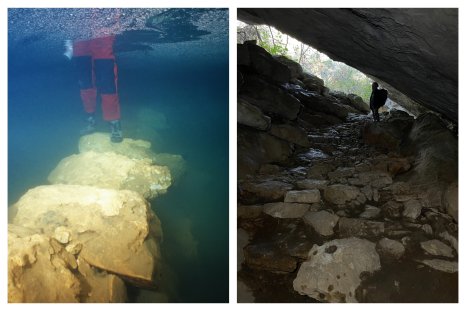Archaeologists have uncovered a "unique" and "mysterious" ancient burial ground in what is now Norway.
The site, located in Fredrikstad municipality in the country's southeast, features around 40 circular stone formations containing cremated bone remains in the center, the vast majority of which are those of children, ScienceNorway reported.
"The burial ground is to our knowledge unique and the only one of its kind in Norway and Scandinavia. Although we have excavated similar burial grounds in the past, very few of the graves are for children, or few children have been identified," Hege Damlien, the project leader for the burial ground's excavation, told Newsweek.
Radiocarbon techniques have indicated that the graves date to between 1300 B.C. and A.D. 200, although most of them originate from the period 800 to 400 B.C., which extends across the Late Bronze Age and Early Iron Age in Scandinavia.
The bones found at the site were burned and very fragmented, according to Damlien, a professor who is with the University of Oslo's Museum of Cultural History. But analysis of the bones revealed many preserved skull fragments that are characteristic of children, many of whom were infants at the time of death. Others were between 3 and 6 years old.
"The most mysterious [aspect of the site] is why the community buried all the children together at this specific place," Damlien said.
The child mortality rate was high during the period that the burial ground appears to have been in use, she said.
In Norway, the Bronze Age was characterized by the Nordic Bronze Age culture, a continuation of the Battle Axe culture and Bell Beaker culture. In the Late Bronze Age (around 1300 to 500 B.C.), the society within what is now Norway was changing.
"The cremation grave tradition along with bronze were introduced, and this is seen as influences from the Urnfield culture, a late Bronze Age culture of Central Europe," Damlien said. "The graves were more modest both in layout and grave goods than in the period before, suggesting the community was more important than marking the power of individuals."
She added: "The cremation grave tradition from the Late Bronze Age continued into the Early Iron Age. The people were probably farmers, and several settlement sites have been found in the nearby area."
Do you have a tip on a science story that Newsweek should be covering? Do you have a question about archaeology? Let us know via science@newsweek.com.
Disclaimer: The copyright of this article belongs to the original author. Reposting this article is solely for the purpose of information dissemination and does not constitute any investment advice. If there is any infringement, please contact us immediately. We will make corrections or deletions as necessary. Thank you.



